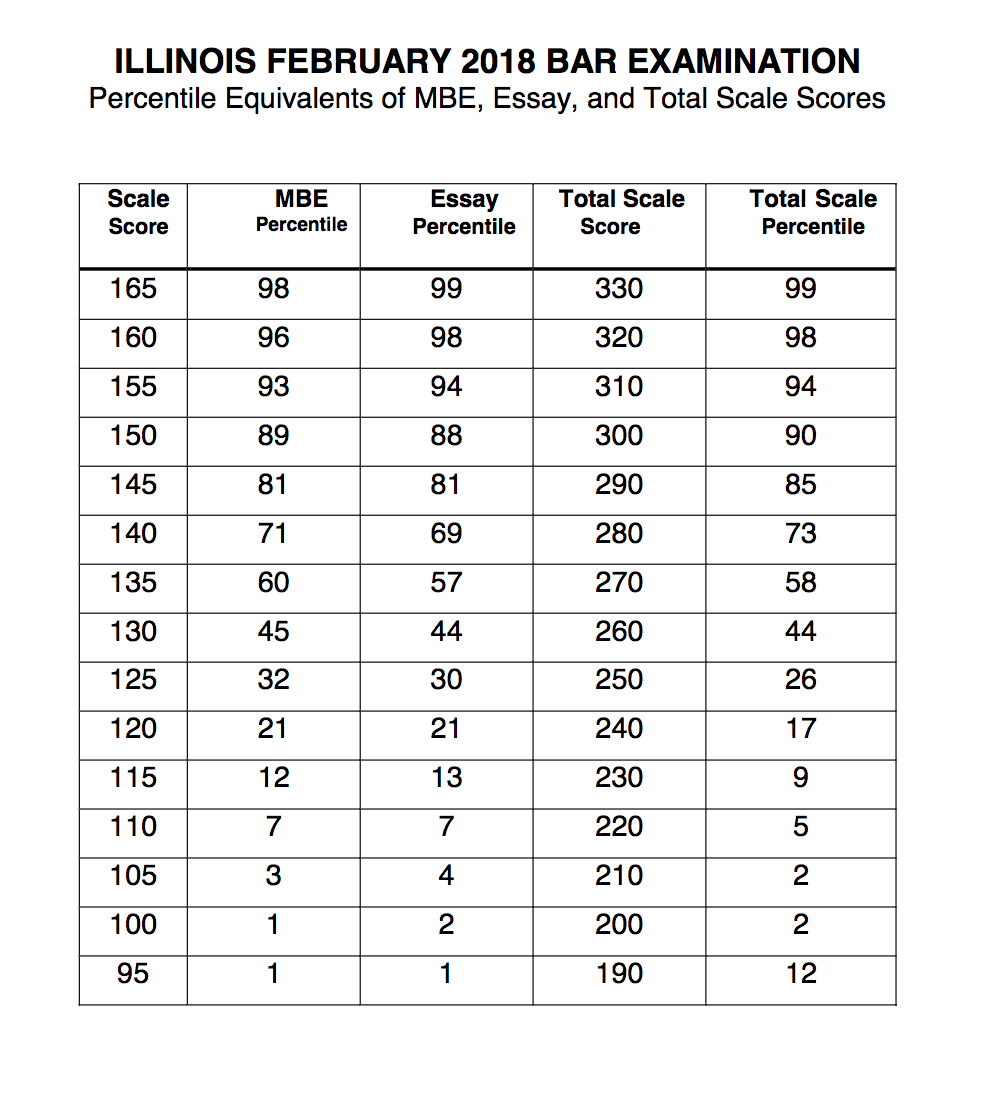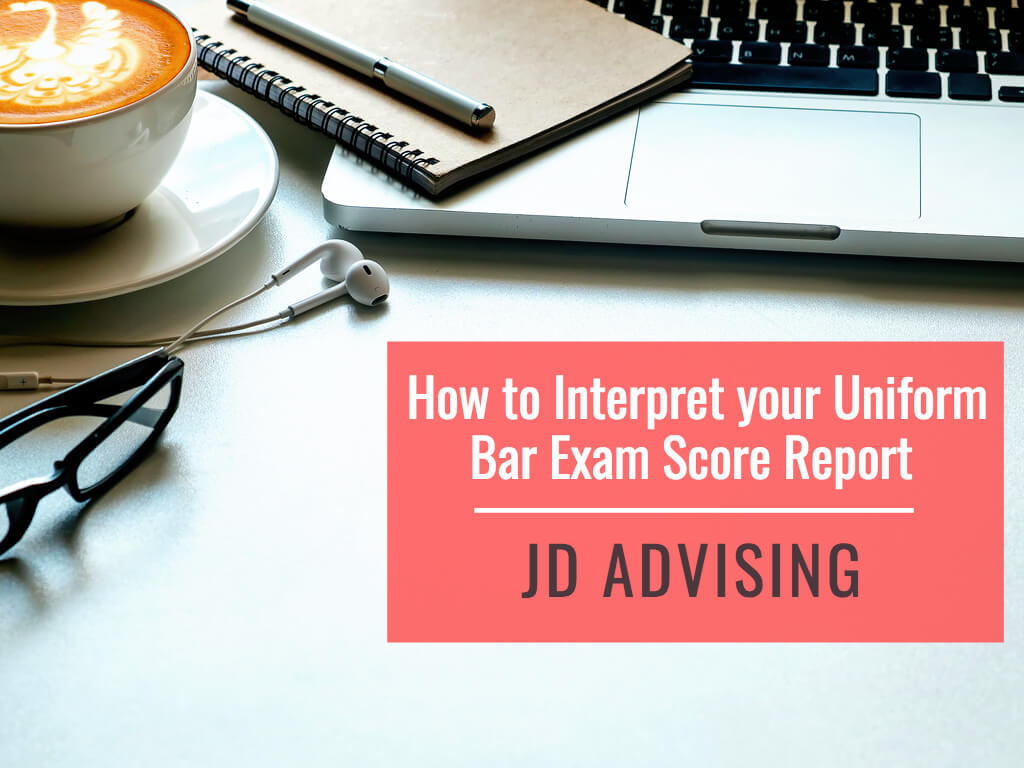How to Interpret Your Uniform Bar Exam Score Report
How to Interpret Your Uniform Bar Exam Score Report
Here, we tell you how to interpret your Uniform Bar Exam score report and how to avoid some of the common mistakes that students make when they attempt to interpret their Uniform Bar Exam score reports! If you failed the Uniform Bar Exam, interpreting your Uniform Bar Exam score report is the first step toward coming up with an effective Uniform Bar Exam study plan.
A Uniform Bar Exam (UBE) score report will have a few things you will want to pay attention to: your overall score, your MBE scaled score, and your written score. Here, we tell you what each one means.
Note: if you are in New York, please check out this post on how to dissect your New York Bar Exam score report.
Your overall score
The first thing you will probably look at is your overall score, as this will tell you if you passed or failed the Uniform Bar Exam. (Your Uniform Bar Exam score report should also clearly indicate “PASS” or “FAIL”!)
Uniform Bar Exam states require a score between 260 and 280 to pass the Uniform Bar Exam. So, if your score was above 280, you technically received a score that is considered passing in every Uniform Bar Exam state.
One thing you may wonder about when examining your overall score is what percentile you scored in (that is, how did you score in relation to other test takers?). If you read this post on UBE percentiles, you can figure out your approximate percentile. A few numbers to guide you (note: these numbers change every administration, but not significantly; so you can use this as a general guide of how well you scored):
- A 330 is the top percentile (99th percentile for the February 2018 Uniform Bar Exam)
- A 300 is approximately the 90th percentile
- A 280 is approximately the 73rd percentile
- A 270 is approximately the 58th percentile
- A 260 is approximately the 44th percentile
- A 250 is approximately the 26th percentile
- A 240 is approximately the 17th percentile
- A 230 is approximately the 9th percentile
- A 210 is approximately the 2nd percentile
Your “percentile” tells you the number of people you scored higher than. So, if you are in the 39th percentile, you scored higher than 39% of examinees (and lower than about 60% of examinees). If you failed the Uniform Bar Exam, your percentile can tell you how much work you need to do to pass! For example, if you are in the 2nd percentile, you have a lot more work to do compared to someone who is in the 44th percentile.
Your MBE scaled score
You will not get your MBE “raw” score (i.e., the exact amount of questions you answered correctly). Rather, you will get a scaled or “converted” score. The scaled score is converted from the raw score but the National Conference of Bar Examiners does not reveal the formula it uses to do this. So you will not know the exact percentage of questions you answered correctly.
It is very important to dissect your MBE scaled score to see how well you did. For example, review this chart below from the February 2018 bar exam. (This was promulgated by Illinois.) On the very left side, find the column titled “Scale Score” then see “MBE Percentile” right next to it. Compare your scaled score to your MBE percentile.

If you scored a 100 on the MBE, you are in the bottom 1 percentile, meaning you have a lot of work to do. If you scored a 140, however, you are in the 71st percentile! So, that is quite good. (Note: percentiles change from administration to administration, but this can be used as a decent guide as to where you stand.)
The MBE is curved, so just because you scored “close” to passing doesn’t mean you are as close as you think. For example, a 125 is the 32nd percentile, and a 135 is in the 60th percentile. That is only a 10-point difference in score, but almost a 30-point difference in percentile! So, if you are in the 120’s on the MBE, you may still have a lot of work to do to move your score up only a small amount.
In most states, you want to aim for a score between 130 and 140 to “pass” the MBE. If you are not sure what score you should aim for, just take the overall score needed and divide it by two. So, for example, in New York, you need a 266 to pass the bar exam. If you divide 266 by two, that is 133. So you should aim for at least a 133 on the MBE. (You also can check out this post on passing MBE scores by state if you don’t want to do the math!)
Note: Some jurisdictions also tell you how you scored in each MBE subject. This is worth paying attention to as it can reveal where your weaknesses are! If your jurisdiction tells you that you scored in the 70th percentile in Evidence and in only the 5th percentile in Torts, that is a sign you likely need to work on Torts!
Your written score
In a Uniform Bar Exam score report, you may also see six scores for your Multistate Essay Exam (MEE) answers, and then two scores for your Multistate Performance Test (MPT) answers (not all states release this information, but most do). The vast majority of states grade on a 1–6 scale. (Some states grade on a 1–10 scale, and other states, like New York, do their own thing, which you can read about here.) Your score report may look something like this:
- MEE #1: 4
- MEE #2: 4
- MEE #3: 5
- MEE #4: 2
- MEE #5: 1
- MEE #6: 3
- MPT #1: 3
- MPT #2: 4
So, the first six scores generally are your MEE scores. And, the last two scores are your MPT scores. Remember that these are not weighted equally! The six MEE essays are worth 60% of your written score. The two MPTs are worth 40% of your written score! So, the MPTs are worth more.
In most states that grade on a 1–6 scale, a 4 is considered a passing score. Here is the exact number a passing score for each essay:
- A 3.9 is considered passing in Uniform Bar Exam jurisdictions that require a 260 to pass.
- A 4.0 is considered passing in Uniform Bar Exam jurisdictions that require a 266 to pass.
- A 4.1 is considered passing in Uniform Bar Exam jurisdictions that require a 273 to pass.
- A 4.2 is considered passing in Uniform Bar Exam jurisdictions that require a score of 280 to pass.
Most students make the mistake of just assuming they passed the MPT and MEE portion of the exam when in reality, they have work to do! Make sure to carefully examine your score report to see if you actually passed either of these portions of the exam!
If you did not pass the UBE, we recommend you read this detailed post on what to do if you failed the bar exam. The last thing you want to do is make the same mistakes and fail it again! We tell you how to avoid that and how to study better!
If you have questions about how to interpret your UBE score report, feel free to post in the comments below or contact us.
New: We have an excellent On Demand course available for those looking for a fresh new approach on the bar exam. Check out the advantages of our course here.
Go to the next topic, Step 3: Review Four Common Reasons Examinees Fail the Uniform Bar Exam.
Looking to Pass the Bar Exam?
Free Resources:
- 🌟Bar Exam Free Resource Center: Access our most popular free guides, webinars, and resources to set you on the path to success.
- Free Bar Exam Guides: Expert advice on the MBE, the MEE, passing strategies, and overcoming failure.
- Free Webinars: Get insight from top bar exam experts to ace your preparation.
Paid Resources:
- 🏆One-Sheets: Our most popular product! Master the Bar Exam with these five-star rated essentials.
- Bar Exam Outlines: Our comprehensive and condensed bar exam outlines present key information in an organized, easy-to-digest layout.
- Exclusive Mastery Classes: Dive deep into highly tested areas of the MBE, MEE, MPT, and CA bar exams in these live, one-time events.
- Specialized Private Tutoring: With years of experience under our belt, our experts provide personalized guidance to ensure you excel.
- Bar Exam Courses: On Demand and Premium options tailored to your needs.
- Bar Exam Crash Course + Mini Outlines: A great review of the topics you need to know!
🔥 NEW! Check out our Repeat Taker Bar Exam Course and our new premier Guarantee Pass Program!






Leave a Reply
Want to join the discussion?Feel free to contribute!